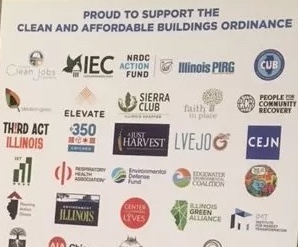In Chicago, about 70% of greenhouse gas emissions come from our buildings. Part of that is because here, it is common to get heat our homes and cook our food with gas appliances (unlike in some other parts of the country where I’ve lived).
To make matters worse, because of repeated, record-breaking rate hikes, 1 in 5 of Chicagoans are behind on gas bills. And in some neighborhoods, up to 50% of households are in chronic debt due to high gas bills. But if folks switched from using gas to electricity, they could save $15,000 to $20,000 over 20 years, according to a study by NRDC.
Burning gas inside your home or business is not only expensive, but it is also detrimental to your health. For just one example of the harms it can do, 1 in 5 cases of childhood asthma in Illinois is attributable to cooking with gas.
The good news is that a Clean & Affordable Buildings Ordinance (CABO) is being considered by City Council. This ordinance would insure that (with a few exceptions) new buildings and substantial renovations to existing buildings would have to meet a strict indoor emissions standard.
CABO is just a first step away from reliance on fossil fuels, and it is supported by a coalition of more than 50 consumer, community, environmental, environmental justice, and faith organizations as a way to lower utility costs, improve public health, create jobs and reduce pollution.
For more information, and form for contacting your alderperson in support of CABO, check out the Citizens Utility Board Q&A.

